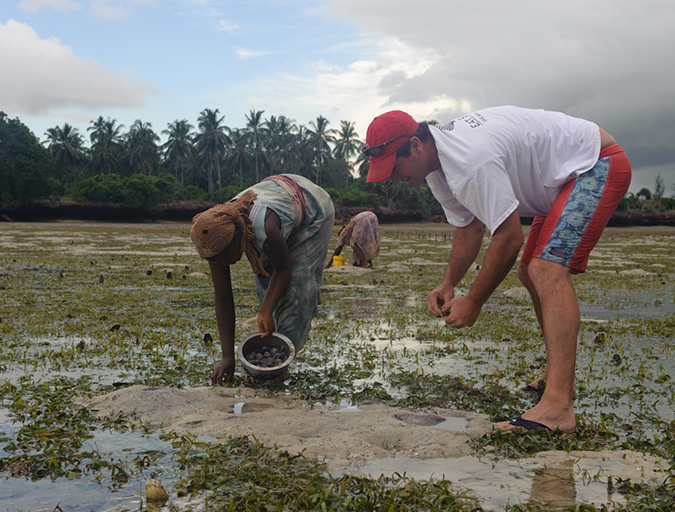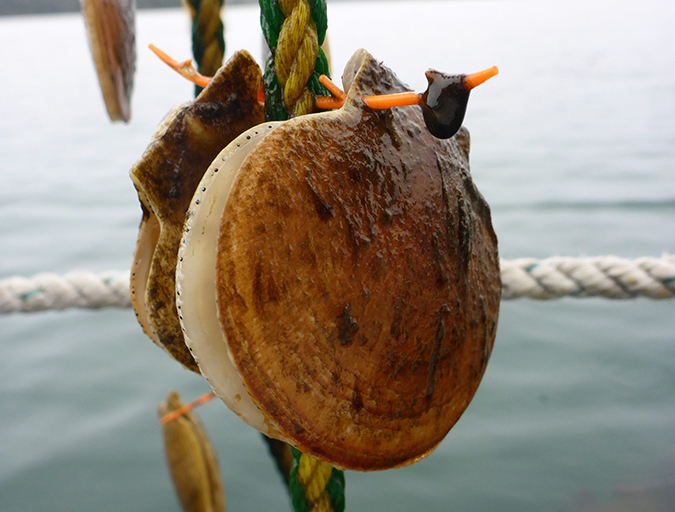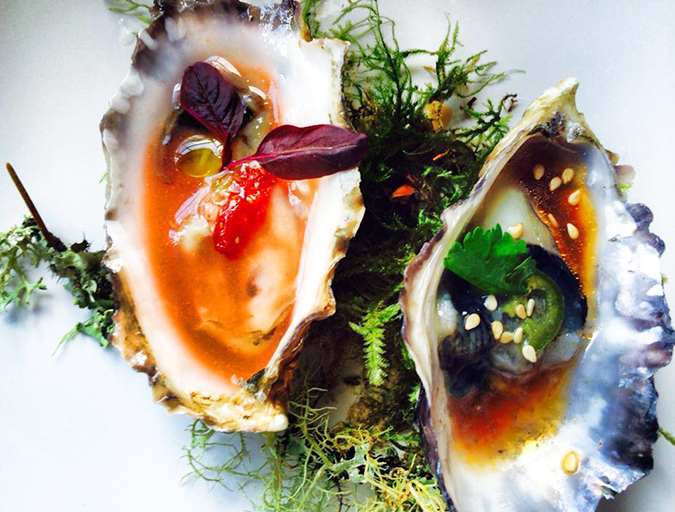National Park Service fends off criticisms concerning Drakes Bay Estero amid restoration efforts

Conventional wisdom has it that oysters are one of the most environmentally friendly animal proteins. Not only do bivalve shellfish require no nutrients or marine ingredients to be added to the water, as filter feeders they actually clean the water column, removing pollutants and impurities to reduce turbidity. So when one of California’s oldest oyster farms was shut down amid reports that it was degrading the environment, local observers took notice. Two years later, the case is still far from closed in the eyes of the farm’s supporters and its critics.
Drakes Bay Oyster Co. was shuttered in late 2014, after a failed attempt to renew its lease on National Park Service land. The farm had been in place in Drakes Estero off the Point Reyes Peninsula in Marin County, California, for nearly 100 years. The federal government bought the land in the 1970s and established the Point Reyes National Seashore, granting a 40-year lease for farming to continue. A local ranching family bought the oyster farm from the original owners in 2004.
In denying the lease, federal officials said they were simply fulfilling a decades-old agreement to restore the area to its natural state, and cited reports that the oyster operation disturbed nearby seals and prevented the growth of native eelgrass. And they noted that the new owners knew there were only eight years left on the lease when they took it over.
But owner Kevin Lunny says there’s more to the story. “It’s not as cut and dried as it sounds,” he said. “The truth is, they didn’t have to remove the oyster farm. It was a discretionary decision.”

A ‘straightforward’ legal issue
The hillsides surrounding Drakes Estero are a patchwork of ranches operating on similar leases – all of which were eventually renewed or converted to special-use permits, he noted. At the time his family acquired the oyster farm, they had the lease reviewed by attorneys and fully expected it would be renewed like other commercial operations in the area.
Instead, federal officials decided not to renew the lease, citing environmental concerns. Lunny and his supporters have challenged those arguments, saying claims that the operation was disturbing harbor seals were not supported by surveys, and that the oysters actually promoted the growth of eelgrass by reducing turbidity, or the relative clarity of the water. “The decision was based on wrong information,” Lunny said.
We’ve seen some increasing density of eelgrass, but we can’t say yet that we can attribute that to the removal of the oysters.
Park Service officials maintain that the case was a straightforward legal issue. “The important part is that this was set aside by Congress,” said John Dell’Osso, chief of interpretation and resource education at the Point Reyes National Seashore. The land had been given wilderness designation in the 1970s, and the lease set a clear expiration date for commercial operations, he noted.
“It was really all based on the wilderness designation and just declining to renew the lease,” said Ben Becker, a marine ecologist with the National Park Service. “Under wilderness designation those are not areas for commercial use.”
But, he adds, oyster farming did also have some impacts on the ecosystem. One area of concern was the estero’s eelgrass beds and how they were affected by the farm’s five-mile-long network of wooden oyster racks (see Fig. 1).
“The eelgrass is relatively healthy in places, but underneath those racks, eelgrass is generally not there – it’s either shaded out, or debris has fallen off the racks and created a new habitat that smothers the eelgrass,” he said. A secondary concern was that the infrastructure of the oyster racks would create an artificial habitat for non-native species to thrive.
Seagrasses worldwide are in decline, and eelgrass is one of few flowering species of plants that live in salt water, notes marine ecologist Jennifer Ruesink of the University of Washington. Often growing in otherwise featureless landscapes, like tidal flats of mud or sand, they provide structure and habitat for an abundance of species, from tiny invertebrates to larger fish.
“In a sense, eelgrass is a sort of engineer of its environment. They make a sort of grassland,” Ruesink said, adding that seagrasses “are under threat from human activities globally.”
A third of California’s oyster harvest gone
Some supporters of the Lunny family have argued that the oyster farm actually promoted eelgrass growth, because the presence of oysters improved water clarity, allowing more sunlight through to the seafloor to help eelgrass grow. But Dell’Osso was skeptical, noting that Drakes Estero was not polluted, that the amount of water circulation from the open ocean made it unlikely the oysters would have much impact on plankton that might be clouding the water, and that similar esteros nearby had thick, lush eelgrass, even though oysters had never been farmed there.
“Almost two years since oyster culture ended in Drakes Estero, the eelgrass beds are healthy and have shown no obvious signs of decline,” he said.
The Lunny family appealed the decision to the U.S. Supreme Court, which declined to hear their case for a preliminary injunction to put the eviction on hold.
“We could have at that point tried to continue with the lawsuit, but they were dismantling the farm,” Kevin Lunny said. “We were basically forced out at that point.”
As part of their settlement agreement with NPS, the Lunnys removed their oysters, leaving the oyster racks in place. Cleanup of the site is now underway, with workers removing an estimated 500 tons of debris under a $4 million federal contract paid for jointly by the nonprofit National Park Foundation and the National Park Service Centennial Project fund.
“The first thing we realized was we had no idea how much debris was on the bottom,” Becker said. “There was more to clean up than we had anticipated.”

With the cleanup not expected to be completed until February, it’s too soon to tell how the removal of the nearly 100-year-old oyster farm will have on the Drakes Estero ecosystem. Monitoring of the area has begun, and will continue for years after the racks come out, Becker says. “We’ve seen some increasing density of eelgrass, but we can’t say yet that we can attribute that to the removal of the oysters,” he says.
The shutdown was a blow to the Lunny family. With a short timeline to get out, they couldn’t sell their oysters fast enough and were unable to recoup their investment in the crop to offset their losses.
“Instead, we had to put money into just destroying them,” he said. “It really, really hurt us.” The farm had been supplying nearly a third of California’s oyster harvest, and the shutdown left many local restaurants scrambling to find a substitute, he noted.
Still, Lunny said he was moved by the strong support the farm and his family received from the community. Far from being soured on aquaculture industry, he says he intends to return to the oyster business and is working on plans to reopen the farm in a new location.
“To tell you the truth, we never felt alone,” he said. “We’re in an amazing community, and we had people at every turn who were there to help.”
Author
-
Ilima Loomis
Ilima Loomis is a freelance journalist in Hawaii who covers science, travel, and business.
Tagged With
Related Posts

Innovation & Investment
Matorka aims to unearth innovation with Arctic charr
A new and ambitious Iceland company is about to construct what it claims will be the world’s largest land-based salmonid farm. What sets Matorka’s Arctic char farm apart is its ability to tap into natural resources unique to the island nation.

Responsibility
Social oysters: Aquaculture inspiring communities
Two New England shellfish producers are furthering their innovative social license initiatives, both in their hometowns and in food-insecure regions overseas. Island Creek Oysters and Matunuck Oyster Farm have become admirable aquaculture ambassadors.

Innovation & Investment
Maine scallop farmers get the hang of Japanese technique
Thanks in part to a unique “sister state” relationship that Maine shares with Aomori Prefecture, a scallop farming technique and related equipment developed in Japan are headed to the United States. Using the equipment could save growers time and money and could signal the birth of a new industry.

Intelligence
Cup size matters, but for oysters, branding matters more
To name an oyster is to give birth to a brand, essential to stand out in today’s raw bar scene. The briny bite-sized morsels are arguably seafood’s sexiest offerings, but a memorable moniker (and a quality product) is what keeps them on the menu.


